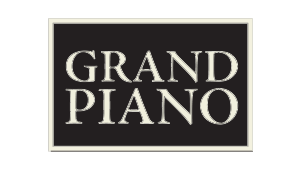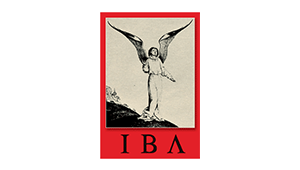Madrigal
Madrigal comedy
Maestoso
Magic opera
Magnificat
Major
Malagueña
Mandolin
Manual
Märchenoper
Marimba
Masque
Mass
Mazurka
Measure
Mélodies
Melodrama
Melodramma
Meno
Mesto
Metamorphosis
Metre
Metronome
Mezzo
Mezzo-soprano
Minor
Minstrel
Minuet
Miserere
Missa
Mode
Moderato
Molto
Monody
Mosso
Motet
Motif
Moto
Movement
Music drama
Music theatre
Mute
Oboe
Octave
Octet
Ondes martenot
Opera
Opéra bouffe
Opera buffa
Opéra comique
Opéra féerie
Opéra semiseria
Opera seria
Opéra-ballet
Operetta
Opus
Oratorio
Orchestra
Orchestration
Organ
Ostinato
Overture
Music and madness are close allied, as Ophelia and King Lear both demonstrated. Madness soon found a place in opera and even the 17th-century lament found room for madness in distinct solo repertoire. It was above all in the 19th century that operas explored more fully the phenomenon of the madness, usually temporary, of operatic heroines. The most famous of these mad scenes is probably the dangerous seizure of Lucia in Donizetti’s Lucia di Lammermoor (‘Lucy of Lammermoor’), but even Meyerbeer’s L’Étoile du nord (‘Star of the North’) needed to allow the heroine a culminating moment of mental abstraction, assisted by an equally agile flute, an attack from which she quickly recovers. This is very different from the madness of Wozzeck in Berg’s opera or other examples of the more clinically accurate portrayal of lunacy in the later 20th century.
Originally a form of vocal composition of 14th-century Italy, the madrigal became, in the 16th and 17th centuries, a favourite form of part-song, stemming first from Italy. In England the madrigal became popular in the last two decades of the 16th century in adaptations of Italian compositions and in new works by English composers.
The Italian madrigal comedy has some importance as a precursor of opera in the later 16th century. It was derived, as its name suggests, from the contemporary fashion for madrigals, part-songs often on a pastoral subject, and from the commedia dell’arte. Characteristic examples are found in Orazio Vecchi’s L’Amfiparnasso (‘The Twin Peaks of Parnassus’) and Il convito musicale (‘The Musical Banquet’).
Maestoso (Italian: majestic) is used to suggest a majestic manner of performance, either in mood or speed.
(see ‘Zauberoper’)
The Magnificat is the canticle drawn from the biblical words attributed to the Mother of Christ, ‘My soul doth magnify the Lord’. It forms part of the evening service of Vespers, in the Divine Office of the Catholic liturgy, and thus appears in composed settings. As part of the evening service of the Church of England it has similarly been subjected to musical treatment. There are notable settings in the early 17th century by Monteverdi and a hundred years later by Johann Sebastian Bach and Vivaldi, among many others.
Major (Latin: greater) is used in musical terminology to describe a form of scale that corresponds to the Ionian mode, the scale on the white notes of the keyboard from C to C. The intervals between the first note or tonic (key-note) and the second, third, sixth and seventh degrees of the major scale are described as major (that is, C to D, a major second; C to E, a major third; C to A, a major sixth; C to B, a major seventh). A major chord or major triad consists of a bottom note with a note a major third above, and, optionally, a note a perfect fifth above the bottom note. In this way the chord or triad C – E – G is described as major.
A malagueña is a Spanish dance from the region of Málaga. The word is later used to indicate a form of Spanish gypsy song. There is an example of the mood and rhythm of the malagueña in Ravel’s Rapsodie espagnole.
The mandolin, a plucked string instrument similar to the lute, exists in various forms. It has fixed metal frets and metal strings in pairs. The prevalent method of playing is tremolando, the notes rapidly repeated with a plectrum. It has been used in opera, notably in Verdi’s Otello and in Falstaff, and in the concert hall in Mahler’s Symphonies Nos 7 and 8.
The manual is a keyboard for the hands, the word used for instruments such as the organ or harpsichord that often have more than one keyboard. It is opposed to the pedal-board found generally on the organ and much more rarely on the harpsichord or fortepiano.
Märchenoper (fairy-tale opera) has a particular place in German opera towards the end of the 19th and into the 20th century. It exemplifies and stems from a German national interest in traditional stories, notably those collected and published earlier in the 19th century by the Brothers Grimm. Among the best-known examples of the genre is Humperdinck’s Hänsel und Gretel (‘Hansel and Gretel’), and there are a number of further examples from his pupil Siegfried Wagner, son of Richard Wagner, who explores the same vein in Der Bärenhäuter (‘The Man in the Bear’s Skin’), Schwarzschwanenreich (‘Kingdom of the Black Swan’) and other works.
The marimba is a form of resonating xylophone occasionally used in the Western orchestra in compositions of the 20th century.
The masque was a court entertainment in England principally in the late 16th and early 17th centuries. It involved drama, dance and music, with an important element of spectacle. Later in the 17th century masques were included in theatrical entertainment, as in the Chinese masque appended to Purcell’s The Fairy Queen. It has been suggested that the same composer’s short opera Dido and Aeneas, like John Blow’s Venus and Adonis, was first presented as a masque at the court of Charles II. As with French court ballet, the dancers, and in England singers and actors, in court masques were often amateurs, courtiers or members of the royal family.
The Mass, the Eucharist of Catholic worship (= Latin: Missa; Italian: Messa; French and German: Messe), has long provided texts for musical setting. The Ordinary of the Mass, the normally recurrent parts of the liturgy, consists of the Kyrie eleison (‘Lord have mercy’), Gloria (‘Glory be to God in the highest’), Credo (‘I believe’), Sanctus (‘Holy, holy, holy’), Benedictus (‘Blessed be he who comes in the name of the Lord’) and the Agnus Dei (‘Lamb of God’). These are the texts most often set. The Proper of the Mass changes from day to day, according to the season or the occasion. The texts of the Proper are less often set, except for texts that may be used with some frequency.
The mazurka is a Polish dance, transformed by Chopin in some 50 piano pieces with this name.
A measure is, in English, a bar, in the sense of the music written between the vertical bar-lines drawn on the stave to mark the metrical units of a piece of music (see also ‘bar’).
The French art-songs of the 19th and 20th centuries are known as mélodies, the counterpart of the German Lieder.
Melodrama makes use of spoken words, accompanied by or framed by music. The form was developed, in particular, by Jiří Antonín (Georg) Benda in Gotha, following the example in France of Jean-Jacques Rousseau. Benda’s very successful melodramas included Medea, Ariadne auf Naxos (‘Ariadne on Naxos’) and Pygmalion, the first two of which suggested to Mozart that he too should attempt the form, although this plan came to nothing. It is possible to distinguish a monodrama, which employs one performer, from a duodrama, which calls for two. Melodrama took a place within opera itself, when spoken dialogue was accompanied by music. A notable example of this can be seen in Weber’s Der Freischütz (‘The Marksman’), when magic bullets are cast, by diabolical means, in the midnight depths of the forest, and there is a sinister dungeon example in Beethoven’s only opera, Fidelio. It has since found an important dramatic place in contemporary opera and music theatre.
The Italian word melodramma is sometimes used in the 19th century as a synonym for opera, but usually with reference to the libretto rather than the music.
Meno (Italian: less) is used in musical directions to qualify other words, as in meno mosso (‘with less movement’).
Mesto (Italian: sad) is used in directions to performers as an indication of mood, as in the slow movement of the Horn Trio of Brahms, which is marked Adagio mesto.
Metamorphosis, change of shape, is used particularly in the sense of thematic metamorphosis: the transformation of thematic elements used by composers such as Liszt (a procedure unkindly satirised by one contemporary critic as the life and adventures of a theme).
(See ‘time’)
The metronome is a device formerly based on the principle of the pendulum, but now controlled more often by electronic means, which measures the equal beats of a piece of music; it is used by players as a guide. The metronome mark of 60 indicates one beat a second, 120 is twice as fast and 240 twice as fast again. The principle was based on the work of Galileo, but the most frequently found clockwork metronome was devised in Vienna by Beethoven’s contemporary and, briefly, collaborator Count Maelzel.
Mezzo (Italian: half) is found particularly in the compound words mezzo-forte (‘half loud’, represented by the letters mf), and mezzo-piano (‘half soft’, represented by the letters mp). Mezzo can also serve as a colloquial abbreviation for mezzo-soprano, the female voice that employs a generally lower register than a soprano and consequently is often, in opera, given the parts of confidante, nurse or mother—secondary roles to the heroine, who is usually a soprano. The instruction mezza voce directs a singer to sing with a controlled tone. The instruction can also occur in instrumental music.
The mezzo-soprano voice is the female voice immediately below the soprano, calling for a more substantial lower range. The term is sometimes used as a synonym for contralto, but a distinction should be made between the two types of voice. The mezzo-soprano assumed operatic importance as a distinct category of voice in the 19th century, as the soprano was urged to new heights. Those unable to reach these with any degree of comfort could be honourably accommodated in the category of mezzo-soprano. The voice came to be more often used for secondary roles, for the seconda donna rather than the prima donna, but exceptions to this include Bizet’s Carmen and a number of Rossini heroines, including Rosina in Il barbiere di Siviglia (‘The Barber of Seville’), although this role is sometimes adapted to suit a coloratura soprano. There has often been some flexibility in casting, although a role such as that of the gypsy Azucena in Verdi’s Il Trovatore (‘The Troubadour’) or, at a more elevated social level, Princess Eboli in the same composer’s Don Carlos, are essentially for mezzo-soprano.
Minor (Latin: smaller) is used in musical terminology to describe a form of scale that corresponds, in its natural form, to the Aeolian mode: the scale on the white notes of the keyboard from A to A. Two other forms of the minor scale are commonly used: the melodic minor and the harmonic minor. The melodic minor scale is a form of minor scale that uses the natural minor form descending, but sharpens the sixth and seventh degrees when ascending. The harmonic minor scale uses the natural minor with a sharpened seventh degree when ascending and descending. The intervals between the first note or tonic (key-note) and the third, sixth and seventh degrees of the natural minor scale are described as minor (that is, C to E flat , a minor third; C to A flat, a minor sixth; C to B flat, a minor seventh). C to D flat forms a minor second. A minor chord or minor triad consists of a bottom note with a note a minor third above, and, optionally, a note a perfect fifth above the bottom note. In this way the chord or triad C – E flat – G is described as minor.
The word minstrel has been used loosely to indicate a musical entertainer, providing his own accompaniment to his singing. The medieval minstrel, a secular musician, flourished between the 13th and 15th century, generally as an itinerant singer.
A minuet (= French: menuet; German: Menuett; Italian: minuetto) is a triple-metre French dance popular from the second half of the 17th until at least the end of the 18th century. It appears as an occasional element of the Baroque instrumental suite and later as a movement in the pre-Classical and Classical symphony and allied forms, gradually replaced by the scherzo. The minuet usually has a complementary trio (a contrasting section in similar metre).
Miserere (Latin: have mercy) is the first word of Psalms 50 (51), 55 (56) and 56 (57), and the word appears on numerous occasions in Latin liturgical texts. There is a famous setting of Psalm 50 (= 51 in the Hebrew and English Psalter) by the early-17th-century Italian composer Gregorio Allegri, the property of the Papal Chapel, written down from memory by Mozart at the age of 14 during his visit to Rome in 1770.
The Latin word Missa, the Catholic Mass or Eucharist, is found in the title of many polyphonic settings of the liturgical texts. The phrase Missa brevis (‘short Mass’) was at first used to indicate a Mass with shorter musical settings of the Ordinary. It later came to be used on occasion for settings that included only the first two parts of the Ordinary of the Mass: the Kyrie and the Gloria. Mass titles, particularly in the 16th century, are often distinguished by the musical material from which they are derived, sacred or secular, as in Missa Adieu mes amours, or Missa Ave Regina. The Missa Papae Marcelli (‘Mass of Pope Marcellus’) is a setting of the Mass written by Palestrina supposedly to preserve polyphony from condemnation by the Council of Trent.
Modal scales are found in various forms. Plainchant, the traditional music of the Catholic liturgy, makes use of eight modes, the church modes, with names derived from very different, earlier Greek modes. The first church mode is the Dorian, the third the Phrygian, the fifth the Lydian and the seventh the Mixolydian. These are the so-called ‘authentic’ modes, their range from D to D, E to E, F to F and G to G respectively. Each authentic mode has an associated ‘plagal’ mode which uses the same final note but within an octave range that starts a fourth below the final and extends a fifth above it. These plagal modes take the Greek prefix hypo-, as in Hypodorian, Hypophrygian, Hypolydian and Hypomixolydian. Theorists later distinguished two further pairs of authentic and plagal modes, the Aeolian, A to A, and the Ionian, C to C. The Locrian mode, B to B, is inaccurately named, but was distinguished in the 16th century as Hyperaeolian. Early polyphony, reaching a height of perfection in the 16th century, is modal, and its techniques continue to be studied as modal counterpoint, a necessary element in the training of a musician. These listed modes and a variety of other modes may be distinguished in folk-music, while composers of the 20th century have constructed their own synthetic scales or modes.
Moderato (Italian: moderate) is used as an indication of the speed to be adopted by a performer. It may be used to qualify other adjectives: e.g. allegro moderato.
Molto (Italian: much, very) is often found in directions to performers, as in allegro molto (or allegro di molto), molto vivace or molto piano.
In the development of opera, the word monody, essentially music for a single voice, is associated with the dramatic monody of the early Baroque, in which the vocal line, accompanied by basso continuo of a chordal and a bass instrument, follows the contours and dramatic stresses of the text. The word covers recitative, arioso and aria at a period when the first and last were not formally distinguished.
Mosso (Italian: moved, agitated) is generally found in the phrases più mosso (faster) and meno mosso, (slower).
A motet is generally a choral composition for church use but using texts that are not necessarily a part of the liturgy. It is the Catholic equivalent of the anthem of the Church of England. Motets appear in very different forms from the 13th century onwards.
The word motif, coined from French, is used in English instead of the German Motiv, or English and American motive. It may be defined as a recognisable thematic particle, a group of notes that has a recognisable thematic character; hence it is longer than a figure, the shortest recognisable element.
Moto (Italian: motion, movement) is found in the direction con moto (‘with movement’—ie fast). A moto perpetuo is a rapid piece that gives the impression of perpetual motion, as in the Allegro de concert of Paganini or the last movement of Ravel’s Violin Sonata.
A movement is a section of a more extended work that is more or less complete in itself. Occasionally movements are linked together, either through the choice of a final inconclusive chord or by a linking note, as in the first and second movement of Mendelssohn’s Violin Concerto.
Although the words music drama might well have been and were used for a long period to signify opera, they are now most aptly applied to the later musical and dramatic works of Richard Wagner, the Gesamtkunstwerk in which he combined all the arts, in particular works such as Der Ring des Nibelungen (‘The Ring of the Nibelung’) and Parsifal.
The descriptive term music theatre found favour in the second half of the 20th century in a reaction against the traditional opera house and all that it involved. It suggested an emphasis on the theatrical element, as in Alexander Goehr’s Naboth’s Vineyard or the Eight Songs for a Mad King and other such works by Peter Maxwell Davies, to be performed by actor-singers or, in some cases, dancers. The genre attracted the attention of Stockhausen and Henze in Germany, Nono and Berio in Italy, Ligeti and, in America, John Cage and his disciples.
A mute (= Italian: sordino; French: sourdine; German: Dämpfer) is used to muffle the sound of an instrument. Mutes work by controlling the vibration of the bridge on a string instrument or muffling the sound by placing an object in the bell of a brass instrument.
Nachtmusik (German: night-music) is best known from Mozart’s serenade Eine kleine Nachtmusik (‘A Little Night Music’).
The adjective ‘natural’ indicates a note that is neither sharpened nor flattened; a sign called a natural is placed next to a note to indicate the cancelling of a previous sharp or flat. The adjective is also used to describe the horn or trumpet without valves.
Neoclassical style in music indicates a 20th-century eclectic return by some composers to various styles and forms of earlier periods, whether Classical or Baroque. The style is exemplified in the score for the ballet Pulcinella by Stravinsky or by the same composer’s opera The Rake’s Progress.
A nocturne is a night-piece, music that evokes a nocturnal mood. It was developed as a form of solo piano music by the Irish pianist and composer John Field in the early 19th century, leading to its notable use by Chopin. The title has been used more recently by other composers for both instrumental and vocal compositions.
A nonet is a piece for nine performers or the name for a group of nine performers.
Notation is the method of writing music down, practices of which have varied during the course of history. Staff notation is the conventional notation that makes use of the five-line staff or stave, while some recent composers have employed systems of graphic notation to indicate their more varied requirements, often needing detailed explanations in a preface to the score. Notation is inevitably imprecise, providing a guide of varying accuracy for performers who must additionally draw on stylistic tradition.
A note in English is either a single sound or its representation in notation. American English refers to a single sound as a tone, following German practice.
Number opera is opera that is made up of distinct and separate sections, complete in themselves. This form is not present in opera that is continuous and through-composed.
An obbligato (obligatory) instrumental part is one of essential importance in accompanying an aria in opera. Well-known examples include the horn obbligato in Va tacito (Go silently) in Handel’s Giulio Cesare in Egitto (‘Julius Caesar in Egypt’) or the flute in Catherine’s mad scene in Meyerbeer’s L’Étoile du nord (‘The Star of the North’).
The oboe is a double-reed instrument and an important part of the woodwind section of the modern orchestra. The mechanism of its keys underwent considerable development in the 19th century. In earlier times it formed an important part of the outdoor military band, but the Western symphony orchestra normally uses a pair of instruments. The oboe d’amore is the alto of the oboe family, used in the Baroque period, and the tenor is found in the cor anglais or, in the mid-18th century, the oboe da caccia. The tone of the instrument, much affected by different methods of cutting the reeds, can impart a characteristic sound to a whole orchestra.
The octave is an interval of an eighth, as for example from the note C to C or D to D. The first note can have a sharp or flat providing the last note has the corresponding sharp or flat (i.e. C sharp to C sharp).
An octet is a composition for eight performers or the name for a group of eight performers.
The ondes martenot, an electronic instrument invented by the French musician Maurice Martenot, produces single sounds by means of a keyboard that controls the frequencies from an oscillator. It has a wide range and offers the possibility of glissando. It became popular among French composers, including Milhaud, Honegger, Koechlin, Schmitt, Ibert, Jolivet, Messiaen and Boulez. Varèse also wrote for it, as he did for the less versatile electronic instrument, the theremin.
An opera is a drama in which most of the actors sing all or most of their parts. The form developed at the end of the 16th century in Italy, from where it spread to other regions of Europe, although it never became a regular part of London musical life until the early 18th century. Internationally Italian opera has proved immensely important and popular, while opera in France underwent independent development in the later 17th century under the Italian-born composer Lully. The 19th century brought particular developments in German Romantic opera and in the innovative music-dramas of Wagner. The word opera covers a wide variety of musico-dramatic forms, from the Orfeo of Monteverdi to the Dreigroschenoper (‘The Threepenny Opera’) of Kurt Weill and Berthold Brecht of 1928, derived from the English anti-heroic Beggar’s Opera two centuries earlier.
Opéra bouffe is the term used for French comic opera of the middle and later 19th century, witty in its dialogue and light-hearted in its music. The genre is exemplified by works such as Offenbach’s Orphée aux enfers (‘Orpheus in the Underworld’).
Although not at first regarded as a classification of opera in the earlier 18th century, the term opera buffa (= French: opéra bouffon) came into gradual formal use to signify Italian comic opera. The later 17th century had brought a mixture of the serious with episodes of comic relief. The 18th century introduced a reform that tended to the separation of the two elements, the comic and the serious. The opera buffa was developed in Naples, thereafter spreading north to Rome and to Venice, assisted by the activity of the playwright and librettist Carlo Goldoni and culminating in the work of Mozart and Lorenzo Da Ponte, Le nozze di Figaro (‘The Marriage of Figaro’), Don Giovanni and Così fan tutte (‘All Women Do the Same’), between 1786 and 1790. Less important as the 19th century went on, there were still notable examples of opera buffa in Rossini’s Il barbiere di Siviglia (‘The Barber of Seville’) and Donizetti’s L’elisir d’amore (‘The Elixir of Love’) and Don Pasquale.
Having its origins in the music of the Foires (‘Fairs’) in Paris, opéra comique developed as a musical and theatrical entertainment usually also involving spoken dialogue. This form and distinction belongs essentially to the 19th century. The fair theatres offered generally popular entertainment, but the form changed under the influence of Italian opera buffa, after the rivalry of the 1750s between this Italian form and French formal opera. There were inevitable changes with the Revolution, when Viotti’s attempts to introduce naturalised Italian comic opera failed. In the new century opéra comique, staged by the theatre company of that name that had been first established in 1714 and continued, in one form or another, until relatively recently, included works of relatively serious content, such as the earlier version of Gounod’s Faust, with its element of spoken dialogue. There was less of a place for spectacle or ballet, and various conventions of casting became established.
Opéra féerie (fairy opera) is the French counterpart of the German Märchenoper (fairy-tale opera). Massenet’s opera Cendrillon (‘Cinderella’) from the end of the 19th century provides an example of the genre, which had its roots, as far as plot and characters are concerned, in the operas and opéra-ballet of the 18th century.
The Italian opera semiseria of the earlier 19th century includes serious and lighter elements, as in Bellini’s La sonnambula (‘The Sleepwalker’).
A retrospective classification of Italian opera on a serious subject, opera seria itself had its origin in a reaction against the mixture of the comic and the serious that had prevailed in the later 17th century, defying the rules of Aristotle and provoking criticism from proponents of French classical theatre. The chief librettists in this reform were Apostolo Zeno and the writer known as Metastasio. With them the form took a precise shape, depending on a number of distinct arias, properly allocated, with the necessary variety of feeling (affetto) and of versification. The form, reflected by the work of Handel in London, was modified by the realism introduced by Gluck and the librettist Calzabigi in the third quarter of the 18th century and the elimination of some practices that had become established in spite of clear dramatic needs. By the end of the century the era of the Italian opera seria was over, although Mozart, in 1791, could set a modified version of Metastasio’s La clemenza di Tito (‘The Clemency of Titus’), first used by Caldara in 1734, for a coronation performance in Prague.
French opéra-ballet flourished in the first three-quarters of the 18th century and combined elements of opera and ballet in a work that might or might not be unified by plot. A well-known example is Rameau’s episodic Les Indes galantes (‘The Galant Indies’), staged in Paris in 1735.
Operetta is light opera, a form that came into its own in the second half of the 19th century. Its provenance is usually considered to be Paris, where Offenbach was at work, followed soon by Vienna, with Johann Strauss II, Suppé, Ziehrer and later generations, who included Franz Lehár and Emmerich Kálmán. The English counterpart is found in the operettas of Gilbert and Sullivan. Although these last keep some place in national repertoire, where they have had no lasting successors, Viennese operetta still holds its own in revival, as do some of the works of Offenbach. Lighter musical stage works, however, have been influenced by the musical comedy of the earlier 20th century and by the musicals that have emerged from American influence and from the more recent developments of spectacular stage effects in a variety of musical entertainments.
Opus (Latin: work) is generally used in the listing of a composer’s works by opus numbers, usually abbreviated to ‘Op.’. Since the Latin plural opera would lead to unnecessary confusion it is best avoided, although the alternative ‘opuses’ remains an unsatisfactory substitute. Opus numbers are not always a guide to the date of composition or even to the date of publication.
Originating in works of religious content, generally unstaged, for the edification of those associated with the Oratorian movement of St Philip Neri in later 16th-century Rome, the oratorio has some claim to inclusion in a consideration of opera through the staging in Rome in 1600 of Cavalieri’s Rappresentatione di anima e di corpo (‘Representation of Soul and Body’), which combines elements of a medieval morality play with the new dramatic music of the period. For some this was regarded as the first opera of all. In both its Italian and, with Handel, its English form, oratorio continued to have a strong musical and often dramatic connection with opera, although designed for unstaged performance.
The orchestra, the dancing place of the ancient Greek theatre, came, in the early 18th century, to mean a group of instrumental performers of varied number (although this meaning still met with objections at the time). The size and composition of the orchestra has differed from century to century, but during the course of the 17th century the string section developed as a five-part and later as a four-part section: first violins, second violins, violas, and cellos and double basses, the last two playing the same part (although the double basses would sound an octave lower). In the later 18th century it became usual to have in the orchestra an additional pair of French horns and a pair of oboes, doubling flute as necessary, with a bassoon doubling the bass. By the end of the 18th century a larger ensemble that included when necessary a pair of trumpets and drums was usual. In the 19th century clarinets, already used occasionally by Mozart and Haydn, became a regular part of the woodwind section, in addition to flutes, oboes and bassoons. The brass section came to include trombones, instruments earlier used for special purposes only, as well as trumpets, to be extended to instruments of lower range during the century. The 20th century brought an extension of the percussion section. The number of players involved in a full symphony orchestra has grown very considerably, to over 60 string players and a possible 40 or more wind and percussion players. This compares with Mozart’s Salzburg orchestra of 23 string players and a dozen or so wind players, and the orchestras of less prosperous princedoms, which might employ much smaller forces, of a dozen or fewer string players and four or five wind players.
Orchestration is the art of arranging music for the orchestra or the way in which this is done.
The organ is a keyboard instrument in which the sound is produced by air passing through pipes of various size and construction to give a wide variety of pitches and timbres. The instrument has its probable Western origin in the Hellenistic period, with the water-organ of Alexandria. Varying in size and mechanical efficiency, the organ had by the later 17th century given rise to an important school of performance, leading directly to the achievement of Johann Sebastian Bach in the first half of the 18th century. Technical developments have taken place since then, giving still greater versatility to the ‘king of instruments’.
Ostinato (Italian: obstinate) indicates a part that repeats the same rhythm or melodic element. The basso ostinato or ostinato bass occurs in Baroque arias where a melody is set over a repeated bass pattern. Ostinato is used by the Bavarian composer Carl Orff in his instrumental teaching methods, where it may form a basis for improvisation by pupils.
The overture (= French: Ouverture; German: Ouvertüre) is, in opera, the music, generally instrumental, that opens a work. The word itself was used in the early 18th century as a title for an instrumental suite and from the 19th century as the designation of a form of instrumental concert-piece, often with narrative or descriptive extra-musical associations. A broad distinction may be made between the Baroque French overture of Lully, with its opening, stately dotted rhythms and following fugue, and the Italian overture of Alessandro Scarlatti, the sinfonia avanti l’opera (symphony before the opera), from which the three-movement Italian symphony was derived. While early overtures may be little more than an instrumental call to attention, a sign that the opera is about to start, and many 18th-century overtures may have little relevance to what follows, later composers tended, more and more, to relate the overture, thematically or in mood, to the work that was to follow.






























